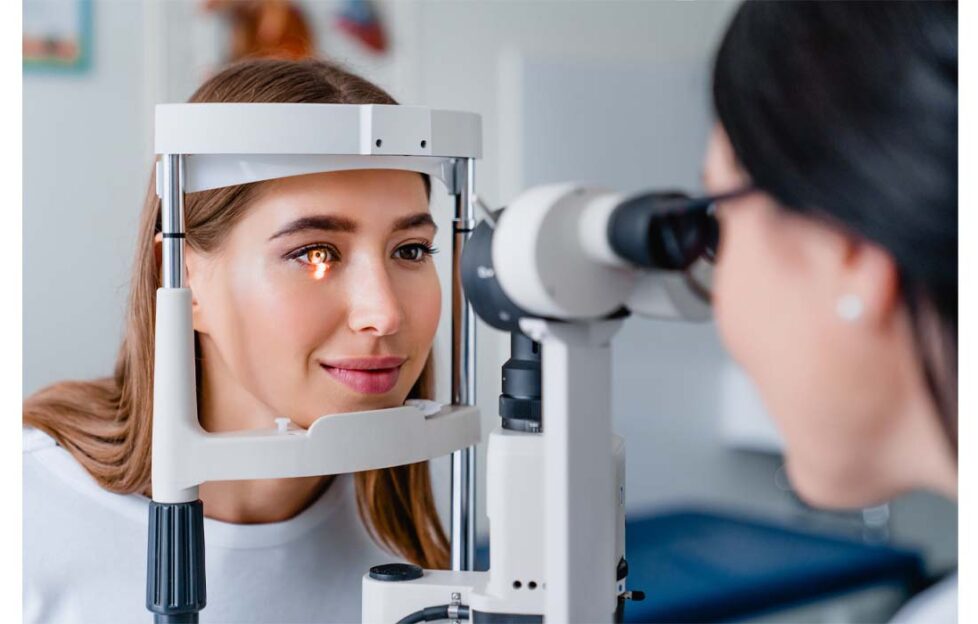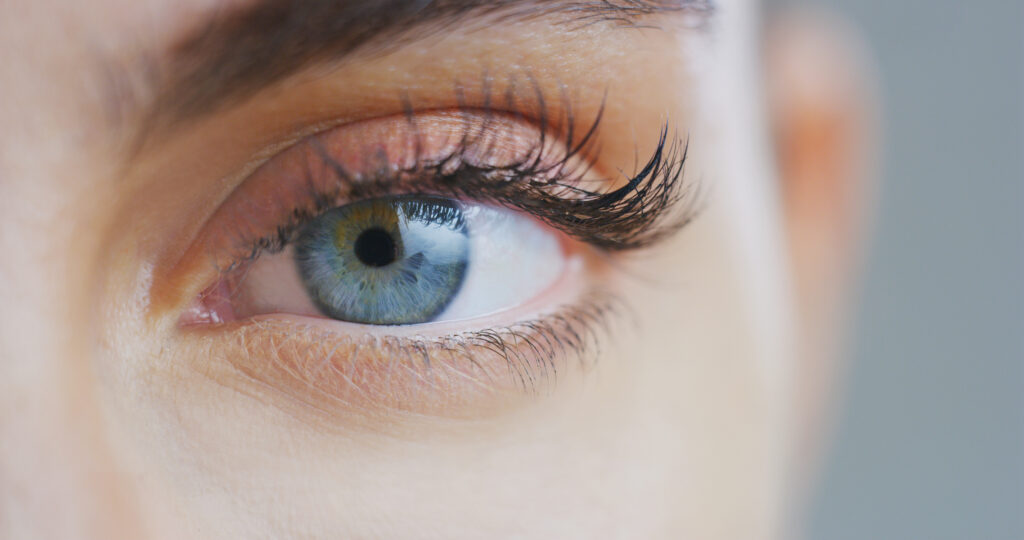Do You Know The 6 Health Conditions Eye Tests Can Reveal?

It’s natural, that in the last two years, diary appointments have been cancelled or even forgotten about, with lockdown and Covid causing havoc to the routines of normal life. While many rushed to get hairdresser appointments or even an MOT on their cars, looking after your health has never been more important.
Is booking your eye test at the bottom of your to do list? Then it may be time for a rethink, as this simple routine test can reveal a lot more about your health than you realise.
Magnifying Glass
Dr Andy Hepworth from optical lens specialists Essilor explains that eye examinations can highlight much more than just short or long sightedness or common eye conditions.
“TV Celebrity Sue Perkins recently revealed that her father was diagnosed with an inoperable brain tumour as a result of an eye examination at an optician,” says Dr Andy Hepworth. This is one example of why it’s vital for people to get their eyes checked regularly by a professional, at least within the recommended timeframe of every two years minimum, even if your vision seems fine.”
Eyes are like a magnifying glass into the inner workings of our blood vessels, nerves and connective tissues throughout the body. So eye examinations are an important health check for overall wellbeing – and a potential way to identify an underlying potentially life-threatening issues.
Six Health Signs
Whilst it’s unlikely that your eye test will show anything serious, it’s good to know that a routine eye test every two years can flag up health issues that may go unnoticed. We take a look at the six health conditions an eye test may reveal:
Brain Tumours
Tumours on the brain can cause increased pressure that results in swelling near the back of the eyes – meaning that an optometrist can see these abnormalities. Changes in pupil size or double vision are also potential signs of a brain tumour. Other cancers that might affect the eyelids and outer surfaces of the eye can also be found during a detailed eye exam.
Diabetes
Diabetes affects eye tissue and thus can be identified with an eye exam. Tiny blood vessels in the retina that leak yellow fluid or blood can be a sign of diabetic retinopathy. Diabetic retinopathy happens when the blood vessels in the eye are damaged by high blood glucose levels, which is a serious condition if left undiagnosed. Early signs are usually picked up during diabetic eye screening – this is when photographs of your eyes are taken to check for damage.
Cardiovascular Conditions
Eye exams can detect a number of cardiovascular conditions, including clogged arteries or decreased blood flow due to heart disease. These conditions can leave plaque deposits or show as damage within the eye area to indicate a more significant health issue.
High Blood Pressure
A very slight bleed in the eye, that presents itself as a tiny broken blood vessel in the white of the eye, can be associated with high blood pressure.
High Cholesterol
Eye tests can detect some warning signs that point to the presence of high cholesterol. For example, sometimes people with high cholesterol have small deposits of fat called xanthelasmas, that can occur on the eyelids. Similarly, by examining the cornea – the dome shaped clear structure in front of your iris – it can show what’s called an arcus that can relate to cholesterol levels.
Thyroid Eye Disease
Thyroid eye disease is a condition in which the eye muscles, eyelids, tear glands and fatty tissues behind the eye become inflamed. This can cause the eyes and eyelids to become red, swollen and uncomfortable and the eyes can be pushed forward causing ‘staring’ or ‘bulging’ eyes.
Between Appointments
If you’re waiting for an eye test appointment then there are many ways to keep your eye sight in check between appointments. Take a look at our My Weekly guide on how to maintain your eyesight. From eating more fruit and veg to wearing UV filtered glasses. With special advice for smokers here and our no-nonsense guide to maintaining your eyesight between appointments.
Don’t forget you don’t want to create a hazard on the road – if you swerve your eye test.
Of course you don’t need to wait for an appointment if you feel there is something wrong with your eyes. “If you are experiencing any changes to your vision or pain, redness and discomfort for more than a couple of days then you should get your eyes tested. Symptoms such as eye pain, burning, blurred/double vision, floaters with flashing lights and droopy eyelids could all be signs that something isn’t right. Redness and irritation are often an early warning signal that your eyes could do with a bit more looking after. This can be caused by a range of factors including fatigue, allergies, over-wearing contact lenses or an infection such as conjunctivitis. Your optician can advise and recommend treatment if it’s needed,” says Dr Hepworth.
Headaches could also be a sign that you need to pay your eyes some attention – eye strain (either from an outdated prescription or too much time spent looking at a screen), can lead to headaches. If you are experiencing headaches regularly it can be easy to overlook eyes as the root cause. It really is important to book an eye examination if anything at all is concerning you.
If you want to read more health stories then we have a whole section on our My Weekly website with the latest health news and features.
My Weekly’s very own resident Dr Sarah Jarvis is also on hand every week to provide all the answers to your health concerns in our print magazine. Don’t miss an issue.






